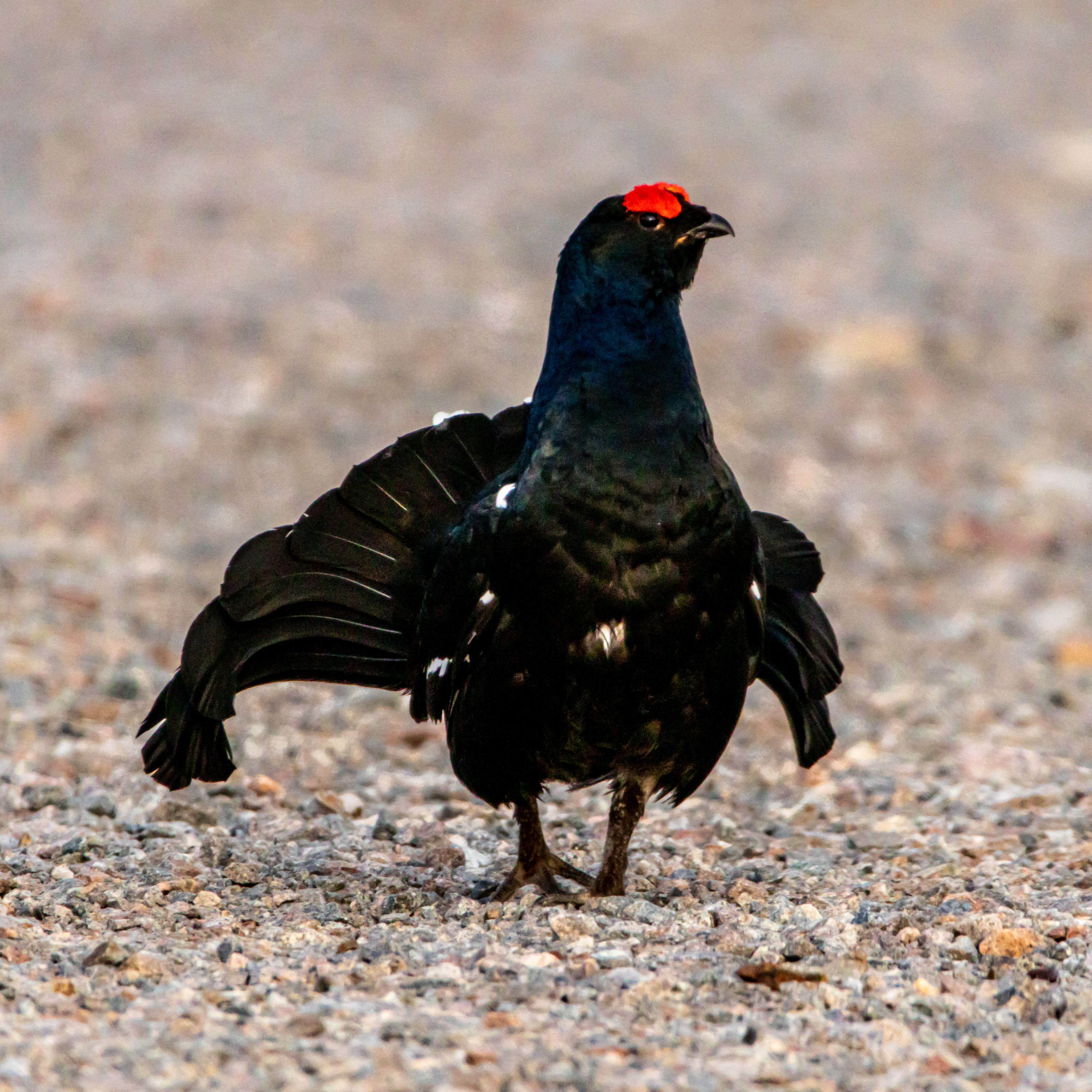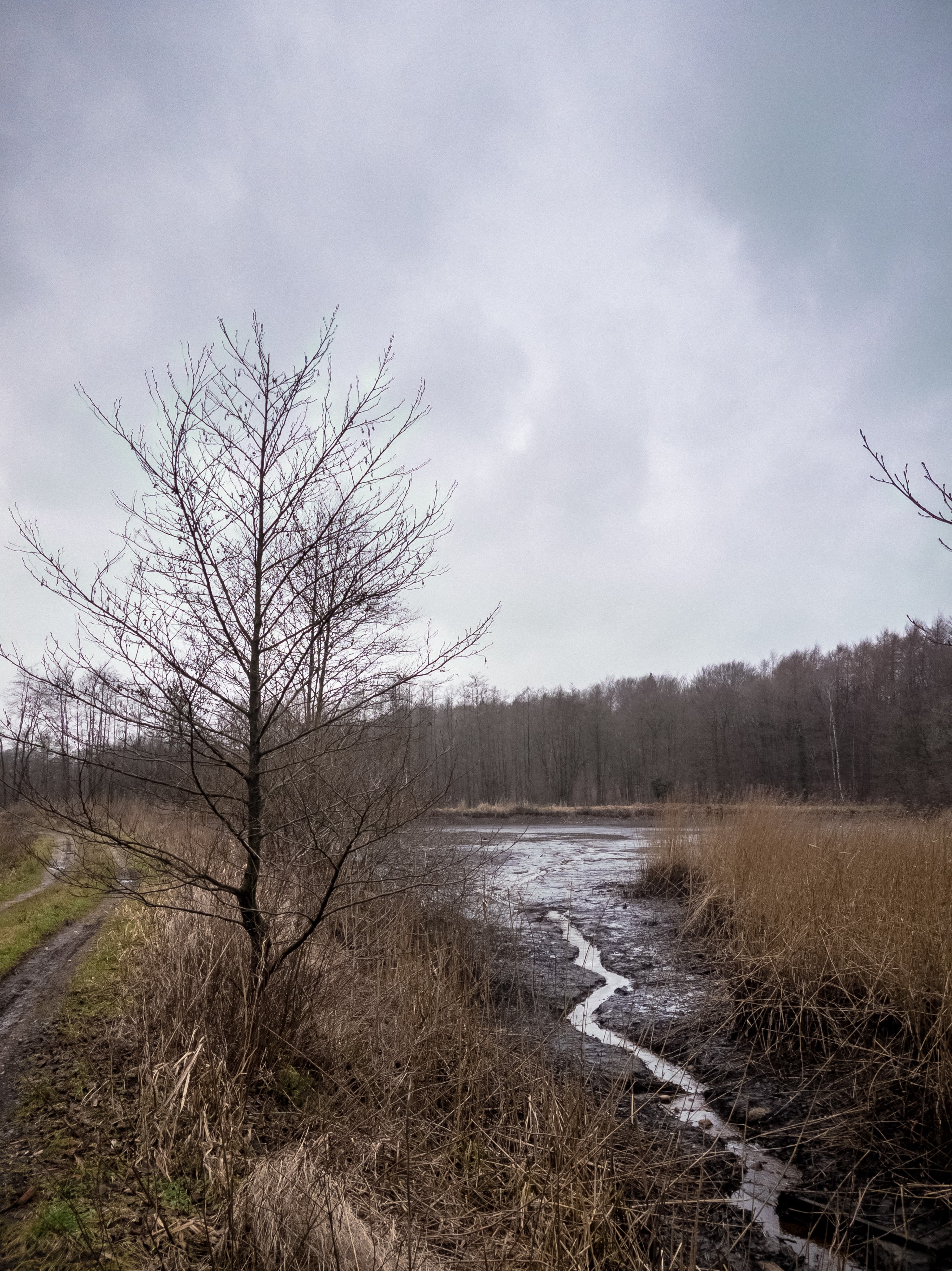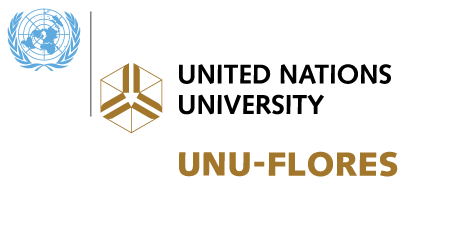Fostering Action for Biodiversity
Laura Hoffmann, Atiqah Fairuz Salleh, Nora Adam

Biodiversity – the diversity of nature – provides structure and functions of ecosystems that support all life on Earth and its loss will affect our current way of living and our survival.
Biodiversity underpins all life on Earth. The air we breathe, the water we drink, the food we eat, and our health and wellbeing depend on life below water (SDG 14) and life on land (SDG 15). To sustain healthy ecosystems and their services to people, we need biodiversity: “the diversity within species, between species and of ecosystems.” (IPBES 2019) However, in the past decades, humans have over-exploited Earth’s resources, resulting in negative effects on the abovementioned services provided by ecosystems.
Although biodiversity is important for human survival, the awareness on biodiversity across the globe is rather low (European Commission 2019, SINUS Institute 2019, BMUV 2019). Biodiversity is complex, and the consequences of changing biodiversity may not be directly visible in the short term. The long-term effects of biodiversity loss will have a major impact on each one of us and will force us to change our current way of living. It is about time, that policymakers, businesses, academics, and civil society take action to mainstream biodiversity conservation and its sustainable use.) However, in the past decades, humans have over-exploited Earth’s resources, resulting in negative effects on the abovementioned services provided by ecosystems. Biodiversity is declining at an alarming rate due to land and sea-use change caused by our food system, economy, urbanisation, and anthropogenic climate change, putting human survival at risk (IPBES 2019).
Current Status of Biodiversity
Biodiversity loss is mainly directly driven by sea and land use change, direct exploitation, pollution, and climate change caused by human activities and indirectly by the economic system and consumption patterns.
Most of the AICHI Targets of the Convention on Biological Diversity have not been met and the number of threatened species on the red list by IUCN continues increasing.
The biggest threats to biodiversity are the direct exploitation of resources in nature and the change of land and sea use, both caused by human activities (IPBES 2019). In 2010, the countries of the Convention on Biological Diversity (CBD) agreed to the twenty AICHI targets to reduce pressure on biodiversity of which none of them has been fully achieved by 2020. Since then a CBD working group has developed a draft on the post-2020 global biodiversity framework with four goals reached by 2050 with milestones until 2030 to assess the process. Biodiversity is still declining, pressures on essential ecosystem functions, and consequently food security cannot be ensured, the economy may slump, and human health and well-being are in danger (IPBES 2019).
Biodiversity in Germany is still declining and the aim to increase it by 2030 will not be met without substantial actions from stakeholders involved.
Germany’s landscapes have been shaped by the construction of settlements, infrastructure, changes in water bodies and of use in agriculture and forestry, which causes habitat fragmentation and decline of species diversity. The target to increase species diversity and landscape quality, that the German government is aiming for in the biodiversity strategy until 2030, seems impossible to accomplish without significant additional effort from all stakeholders. Only in forests, biodiversity tends to increase, while in urban areas and agricultural land, biodiversity has not increased in the past decade (BMUV 2017). Without biodiversity in these areas, ecosystems are less resilient and less productive which puts human health and wellbeing at risk.
Many species groups in Saxony are endangered or extinct and are still declining despite countermeasures. Without them, important ecosystem services for humans will be gone as well.
Saxony in the heart of Europe offers two very special landscapes. Saxon Switzerland with its iconic mountains and Upper Lusatia heath and pond landscapes provide unique habitats for many species and create so-called biodiversity hotspots. Although these landscapes are protected, especially species diversity is still declining. Creating optimal habitats for the endangered black grouse (Lyrurus tetrix) for example has not yet led to an increase in the population (LFULG Sachsen 2019). For the successful protection of biodiversity, ambitious and accountable action targets will be needed in the short and long term (SMEKUL 2020).

Photo by redcharlie on Unsplash
Photo by redcharlie on Unsplash

Photo by Maksym Tymchyk 🇺🇦 on Unsplash
Photo by Maksym Tymchyk 🇺🇦 on Unsplash

Photo by Peter Steiner 🇨🇭 on Unsplash
Photo by Peter Steiner 🇨🇭 on Unsplash

Photo by Lasse Nystedt on Unsplash
Photo by Lasse Nystedt on Unsplash
Call for Action
The status of biodiversity illustrated at global, national, and local level call for action to increase public understanding to empower stakeholders and mobilise concerted action.
If civil society, academia, businesses, policymakers, and practitioners continue business as usual, the pressure on biodiversity will stay high and continue intensifying. Different actors need to contribute to increasing the awareness on biodiversity on all levels taking into account the different indicators (knowledge, attitude, behaviour (SINUS Institute 2019, BMUV 2019)) on which they can have the greatest impact. One inspirational speech from a teacher or friend can inspire a change of habits, start a chain reaction, and unlock other changes among practitioners and businesses. Each stakeholder can have an impact and start a change, which will affect other areas to change too (BMUV 2019, IPBES 2019).
Policymakers shall pave the way for collaborations across sectors to increase awareness on biodiversity on each level.
By opening a space, where new policies, paths, and laws can be developed, new cooperation between different sectors can thrive. Strong integrated policies with the focus on equipping everyone with knowledge on biodiversity, that could in turn influence attitudes and behaviours towards biodiversity, will help raise awareness and mobilise action on biodiversity across sectors (IPBES 2019).
Businesses shall include the importance of biodiversity in their marketing campaigns to raise awareness and to minimise risks and ensure business function.
With identifying and enhancing their environmental impact, businesses and practitioners raise awareness on biodiversity within the company and can communicate the importance of biodiversity to their customers. With a focus on their impact on biodiversity, businesses minimise risks both on the business and on biodiversity (IPBES 2019).
Researchers, students, schools, and institutions of higher education shall mainstream biodiversity by educating about its role and contribution to human health and survival.
Detailed documentation and valuation of natural capital with its dependence on biodiversity will increase knowledge about the importance of biodiversity for human health and ensure their survival. Collecting the data across countries and sectors, including knowledge from local communities, will form the path to mainstreaming biodiversity (IPBES 2019).
Civil society shall increase its awareness on biodiversity, mainstream biodiversity and change their consumption behaviour.
Increasing knowledge on biodiversity and reflection on attitudes and behaviour towards nature increase civil society’s awareness on biodiversity. With an open mindset and the willingness to change, overconsumption will stop and biodiversity loss halted, which ensures human survival (IPBES 2019).
Biodiversity In Our Food System
Biodiversity builds the basis for healthy ecosystems which secures the provision of food, essential ecosystem services, and makes production systems more resilient. Yet, our food system is one of the main drivers of land degradation, threatening biodiversity and putting food and nutrition security at risk.

The resilience of ecosystems, including production systems, towards pests, climate change, and other shocks, highly depends on biodiversity. Without biodiversity, e.g., pollinators and micro-organisms, water and nutrition cycles cannot withstand climate change and lead to lower food production (FAO 2019). Our global food system is the reason for sea and land use change and the direct exploitation which is the main direct driver for biodiversity loss (IPBES 2019, Benton et al. 2021). Losing the variety of plants and animals leads to a homogenous diet and malnutrition which threatens human health. Humans highly depend on the ecosystem services provided by biodiversity for our food system on all levels (genetic, species and ecosystem diversity) to ensure their survival.
Local varieties and genetic diversity are getting lost and impose a huge risk on food security. Genetic diversity plays a key role in increasing the resilience of agricultural systems and wild relatives of common varieties contribute to long-term food security and nutrition (IPBES 2019, FAO 2019). Biodiversity underpins several services which are important for agriculture such as pest control, pollination, and nutrient cycle as well as for our oceans and fish.
The increasing demand for cheaper food has intensified agricultural production which degrades ecosystems that cannot recover to keep their productivity. Agrobiodiversity, including genetics, organisms, and ecosystems in and around food systems (FAO 2019), is declining, which puts human survival at risk. Nowadays, 75 per cent of food is derived from only 12 plant and five animal species and varieties are still declining (FAO 1999). Wild relatives of those varieties play a key role for long-term food security and yet their conservation status is poor. In addition, almost half of habitable land on Earth is covered by agriculture and continues to increase, resulting in ecosystem degradation and biodiversity loss (Benton et al. 2021).
In Germany, half of its land is used for agriculture and food demand is responsible for global deforestation and biodiversity loss. Therefore, the agri-food system has a major responsibility in protecting biodiversity.
Most of the fen soils in Germany, usually rich in biodiversity, are under threat of complete destruction because they are now covered by agricultural land and forests. Species diversity in agricultural land in Germany is still showing a downward trend despite countermeasures (BMUV 2017). Losing important functional species in soils decreases the productivity of the ecosystem and threatens food security. In addition, the demand for cheaper and more exotic food contributes to global deforestation (Benton et al. 2021).
The percentage of organic farming in Saxony is still too low to have a positive effect on the overall status of biodiversity. With more biodiversity-friendly practices, ecosystems can become more resilient and provide the ecosystem services needed for human survival.
Agricultural land covers more than half of the total land area of Saxony, which makes it the dominant land-use type in the State. Although a more effective, less harmful use of fertilisers and pesticides was practised by farmers in the past years (SMEKUL 2020), the removal of diverse habitats has threatened biodiversity in Saxony. Organic farming, yet only slowly increasing, opens the possibility to cultivate more varieties and with the use of less harmful pesticides, it is favourable for the status of biodiversity.


Photo by József Szabó on Unsplash
Photo by József Szabó on Unsplash

Photo by Kees Streefkerk on Unsplash
Photo by Kees Streefkerk on Unsplash
Call for Action
Establishing a strong framework for a transparent biodiversity-friendly food production and multidisciplinary research on food systems calls for cooperation across all disciplines.
Cooperation across all disciplines shall foster transparency in our food system regarding its impact on biodiversity. Sustainable management and landscape planning towards creating diverse habitats in harmony with production systems will ensure healthy and resilient ecosystems (IPBES 2019). The sustainable use of diverse genetic resources within food production can ensure food security with being more resistant to diseases and climate impacts. Mainstreaming healthy diets and reducing food waste in the entire food system and final consumer shall decrease unsustainable food production and consumption and lowers the impact on biodiversity. Reforming our food system from production to consumption will be the key challenge to lowering its impact on ecosystems and biodiversity, mitigating climate change, and achieving SDG 2 (Zero hunger) and SDG 3 (Good health and well-being).
Policymakers form the path for organic and biodiversity-friendly food production and consumption from international agreements to local actions.
Based on the international agreements on the protection and restoration of ecosystems and biodiversity, policymakers have to translate these international commitments into local actions for biodiversity-friendly food production. Frameworks to reduce food waste in production and consumption and a valuation system for biodiversity-friendly actions during food production can be established (IPBES 2019, FAO 2019).
Businesses, including farmers and supermarkets, shall share transparent information on their products about their impact and dependency on biodiversity.
Farmers need to produce food in a way that supports biodiversity. This could include a multifunctional approach of agricultural landscape replacing monoculture. Habitats have to be recreated and the use of diverse gene crops need to be established to ensure the resilience of crop fields. Every business in the food supply chain must disclose their impact on biodiversity locally and globally. By sharing clear and transparent information about their products, costumers have the opportunity to decide in favour of sustainable products in the supermarket (IPBES 2019).
Research into biodiversity-friendly solutions for food production and mainstreaming them through education in the next generations can lower the impact of our food system on biodiversity.
Education and training about biodiversity-friendly management of agricultural landscapes need to be strengthened. In addition, detailed monitoring regarding the impact of our food system on biodiversity has to be established and research on the benefits of biodiversity for food production increased. With more accessible information about the importance of biodiversity for our food system the awareness on biodiversity rises. (FAO 2019, Benton et al. 2021)
Civil society shall rethink their consumption, diets, and food waste production.
Continuing with current diets, high food consumption, and high food waste, civil society increase the demand for more and cheaper food in food supply chains. The raising pressure increases direct exploitation and threatens biodiversity. Losing more biodiversity will risk food security and malnutrition which will affect human health and raises the risks of pandemics With more awareness on the consequences of their daily food decisions, civil society realises their power to signal the demand for sustainable food and food production. Daily food decisions can also call for more transparency in food production and our food system (IPBES 2019, Benton et al. 2021).
Biodiversity in our Economy
The economy highly depends on biodiversity: More than half of the world’s Gross Domestic Product (GDP) can be linked to nature.

Exploiting nature for economic growth has led to the decline of nearly 40 per cent of natural capital per person between 1992 and 2014 and 1.6 Earth would be required to sustain the world’s current lifestyle (Dasgupta, 2021). Although businesses highly depend on nature, as more than half of the world's GDP can be linked to nature, most of the businesses nowadays are not aware of their impact on biodiversity. Biodiversity is essential for an ecosystem to be productive and resilient and by exploiting nature businesses risk their own continued existence. Indirectly, losing biodiversity could increase the risk for zoonosis’ such as COVID-19 and will disrupt society which can create market risk in which businesses are part of (WEF 2020).
If biodiversity is not becoming an essential part when measuring economic success, humankind will face an existential threat to their well-being.
Biodiversity loss is one of the five top risks among climate action failure and extreme weather. It points out that it will affect businesses and human health and well-being if we continue with biodiversity-damaging production and consumption (WEF 2020). Restoring ecosystems, that have been degraded beyond their ability to recover, will be more difficult and expensive, especially in low-income countries where the dependency on nature is higher.
Excessive production and consumption affect natural capital and biodiversity in Germany and other countries.
Germany is a role model regarding environmental standards and its investment in global conservation. Yet, it achieved its economic growth at the expense of natural capital, putting human health and well-being at risk (TEEB Germany 2018). The not identified value of ecosystem services turns into costs to society and it is approved to be cheaper investing in nature conservation than paying off the societal consequences. The difficulty lies in the translation of actions having an impact on global environment and societal problems in developing countries and not only within Germany itself (TEEB Germany 2018).
Both missing knowledge and missing reporting on biodiversity-friendly management in the local economy lead to a “business-as-usual" scenario which intensifies biodiversity loss and threatens the economy.
At the national level, the status of biodiversity and ecosystem services are reported in various sectors (e.g., National Forest Inventory, climate reporting, etc.), which include many aspects of natural capital (TEEB Germany 2018). Yet, reports of the role of biodiversity in the economy, especially on the local level, are missing. Nevertheless, companies are following the trend of lowering their GHG emissions and Saxony is supporting innovations by focusing on circular economy, water management and environmental technologies (SWAK 2020).

Photo by Alexander Cifuentes on Unsplash
Photo by Alexander Cifuentes on Unsplash

Photo by Rūta Celma on Unsplash
Photo by Rūta Celma on Unsplash

Photo by Alesia Kazantceva on Unsplash
Photo by Alesia Kazantceva on Unsplash
Call for Action
Successful transformative change needs cooperation and commitment from all actors on all levels.
All actors need to cooperate to increase information about the importance of biodiversity in our economy. Businesses and the economy play a key role in a successful transformative change and must collaborate in the strategy for biodiversity conservation. Biodiversity needs to be assigned an accountable value and a respective price. With a transparent supply chain, society and policymakers would be able to take decisions with all information available regarding consequences on nature (IPBES 2019, Dasgupta 2021).
Policymakers shall build a foundation to reform economic and financial systems, restructure incentives and laws to include a valuation for biodiversity.
Current incentives for businesses need to be evaluated and wrong incentives eliminated to form a path for the reformation of our current economic and financial system. The valuation of biodiversity and in favour of biodiversity-friendly practices must be prioritised. Decisions must focus on sustaining common goods and ecosystem services. We must find clear long-term regulations on the accountability of biodiversity-friendly products across all sectors (IPBES 2019).
Businesses shall identify and assess their impact on biodiversity and set strategies to lower their impact on it.
Business plans and strategies need to include long term assessment on their impact on biodiversity and biodiversity-friendly actions contributing to sustainable production, for example with the Nexus approach. Transparency about production toward customers is necessary to give society the chance to choose with all the information available regarding the product’s impact on nature and society (IPBES 2019, Dasgupta 2021).
Academia shall investigate on the valuation of ecosystem services and biodiversity and explore methods for biodiversity accounting.
Researchers must find a successful natural capital and biodiversity accounting system which represents the value of biodiversity in our economy. Mainstreaming the education on a sustainable, circular economy and natural capital can lead to biodiversity-friendly practices in different sectors within our economy. We need a valuation system for nature and biodiversity which reveals the actual price of all types of products (IPBES 2019, WEF 2020).
Civil society shall increase its awareness on biodiversity, call for more transparency in our economy and mainstream biodiversity.
With the transparency of the impact of production and supply chains on nature and decision making upon common goods, civil society is aware of their personal impact on biodiversity. Mainstreaming biodiversity and increasing awareness will help civil society to understand their dependence on nature and biodiversity and give its conservation higher importance (IPBES 2019).
Biodiversity and Urbanisation
Biodiversity loss is indirectly caused by urbanisation, however, cities also offer unique habitats and can be an opportunity for biodiversity conservation.

By 2050, the number of people living in cities is estimated to nearly double in comparison to 2010 – and this has an impact on biodiversity (CBD 2012). Cities contribute to key anthropogenic drivers of biodiversity change: land/sea-use change, climate change, pollution, among others (IPBES 2019). Taking land-use change as an example, natural habitats are often destroyed or converted to other uses to make way for urbanisation. In fact, most urbanisation in the world is happening in so-called biodiversity hotspots (Seto et al. 2012). While this signals urbanisation as a major driver of biodiversity loss, it also explains why we find biodiversity existing in high levels in urban areas – albeit in a modified state (Aronson et al. 2014). This presents cities with the golden opportunity to be part of the solution. As we strive to build sustainable cities and communities (SDG 11), cities can themselves be sites for biodiversity conservation and recultivation. Cities have a huge responsibility to grow sustainably – that they “address critical needs while conserving nature, restoring biodiversity, maintaining and enhancing ecosystem services” (IPBES 2019).
Against the context of cities expanding faster in the Global South, there is globally poor/declining support for the achievement of SDG 11 (Sustainable cities and communities).
Four out of five Targets of SDG 11 have been assessed to have substantial negative trends in terms of nature and its contribution to people on a global scale (IPBES 2019). While there is partial support for the protection and safeguarding of cultural and natural heritage (SDG 11.4), there is major room for improvement in inclusive and sustainable urbanisation (SDG 11.3), reduction of deaths and those affected by disasters (SDG 11.5), reduction in adverse environmental impact of cities (SDG 11.6), and universal access to green and public spaces (SDG 11.7) (IPBES 2019). These developments occur against the background of urban areas growing fastest in the Global South (IPBES 2019).
There are successful efforts in maintaining urban biodiversity in Germany, and a focus on the causes of biodiversity loss in its international biodiversity financing activities.
Every day, almost 70 ha of new land is lost to human settlements and transport infrastructure in Germany (Umweltbundesamt 2015). There have been successful urban biodiversity programmes, such as in Berlin, that recognised early on the value of existing wildlife in the city as an asset (Tertilt 2010). Abroad, biodiversity conservation has been a key area of Germany’s international cooperation with developing countries, focusing on the drivers of biodiversity loss while promoting sustainable production and consumption (BMUV 2018).
Citizen science projects can increase public understanding for the importance of urban biodiversity.
Citizen science projects in Saxony such as VielFalterGarten present opportunities for citizens to get involved in protecting urban biodiversity – by contributing towards monitoring in this case the number of butterflies in the city – they support researchers collect data to better analyse green spaces and environmental changes in cities. By participating, citizens are made aware of the status and importance of urban biodiversity.

Photo by Hanny Naibaho on Unsplash
Photo by Hanny Naibaho on Unsplash

Photo by Ricardo Gomez Angel on Unsplash
Photo by Ricardo Gomez Angel on Unsplash

Photo by Vinay Chavan on Unsplash
Photo by Vinay Chavan on Unsplash
Call for Action
Cities shall take responsibility and invest in nature-based solutions and green spaces to increase urban biodiversity and improve access to them.
To enhance inclusive and sustainable urbanisation (SDG Target 11.3), cities are well-placed to protect and offset biodiversity by investing in nature-based solutions and green spaces (IPBES 2019). It is, however, also important that these are also easily accessible, including for low-income communities.
Policymakers shall integrate biodiversity and ecosystem services in urban plans and developments.
Target 15.9 of the SDG calls for policymakers to integrate ecosystem and biodiversity values into national and local development planning, development processes, poverty reduction strategies and accounts. Aligned with the Resource Nexus, new urban planning paradigms open up opportunities to harmonise different interests through approaches that cut across sectors (IPBES 2019).
Developers shall mainstream biodiversity-rich green spaces in cities, promoting nature-based solutions.
Developers/urban planners, with their teams of architects and civil engineers, shall mainstream biodiversity-rich green spaces in cities, promoting nature-based solutions and blending green infrastructure developments with traditional infrastructure developments.
Strong research on mainstreaming biodiversity across sectors in cities and increased opportunities for environmental education in urban areas would increase public appreciation of biodiversity and in turn promote good human-nature relations.
Good human-nature relations need to be cultivated for urban biodiversity to be well-received. Research on cross-sectoral biodiversity mainstreaming provides a basis for strategies of knowledge transfer. Environmental education in cities would facilitate public understanding and appreciation for urban biodiversity.
Civil society can actively participate in urban gardening projects and raise awareness on the importance of urban green spaces.
At the individual level, civil society can actively contribute to greening the city through urban gardening. Getting one’s hands dirty can help increase appreciation for the biological diversity that exists in the city, often itself a biodiversity hotspot. Depending on the local circumstances, civil society can be a force for not only raising awareness on but also shaping the green spaces in the city for maximal success and acceptance (Haq et al. 2021)
Biodiversity and Climate Change
Biodiversity loss and climate change are interdependent and aggravate each other.

The overexploitation of natural resources and transformation of land- and waterscapes by humankind have led to biodiversity loss and climate change, which in turn threaten human survival. Biodiversity, underpinning ecosystem processes, is essential for healthy ecosystems and the provision of ecosystem services. Many of the ecosystem services influence and are influenced by climate, for example, the water cycle and carbon sequestration, among others. Changes in the water cycle for example will have negative effects on flood regulation, extreme weather events and water quality which puts human health and security from disasters at risk (Millenium Ecosystem Assessment 2005, IPBES-IPCC 2021).
Global warming has pushed species to shift their habitats and life cycles up to their tolerance limits and those unable to do so have become extinct.
Anthropogenic actions, such as land-use change and increasing energy consumption which leads to increasing GHG emissions intensify climate change directly, causing species to have to shift their habitat and lifecycles or risk becoming extinct. From the other side, deforestation of rainforests leads to a decline of biodiversity and influences the global water cycle, which complicates living conditions for plants and animals (IPCC 2022, IPBES-IPCC 2021).
Due to climate change, temperature and precipitation change in the long term which creates better conditions for disease carriers and increases risk for human health.
With changing temperature and precipitation in Germany, the living conditions are becoming more favourable for tropical disease carriers and the risk for infections for both animals and humans is getting higher (Umweltbundesamt 2019). Rising temperature in all landscape types (forests, agricultural land, lakes, rivers) leads to changes in the ecosystem and ecosystem services with effects on vegetation and life cycles for pests. This, for example, threatens the survival of forests and agricultural food production.
Climate change causes heat stress in summer months and more frequent intense rainfalls in Saxony. This threatens species adapted to cold and moist habitats and risks human health.
Saxony, especially the region Lusatia, is one of the warmest regions in Germany. With climate change, temperatures and heavy rains will continue to rise and threaten ecosystems (Umweltbundesamt 2021). The biggest threat is caused to wetlands and water-depended species. Saxony’s contribution to climate change through GHG emission comes mainly from the lignite-fired power plant – in 2018, it contributed up to half of all emissions in the federal state (SMEKUL 2021). In addition, landscape changes caused by mining destroyed many ecosystems and cannot be restored to the same extent in the short term. Nevertheless, new habitats can be created with pioneer species bridging the biodiversity loss and helping recreate a diverse and healthy ecosystem.

Photo by Justus Menke on Unsplash
Photo by Justus Menke on Unsplash

Photo by Moritz Lüdtke on Unsplash
Photo by Moritz Lüdtke on Unsplash

Photo by Malachi Brooks on Unsplash
Photo by Malachi Brooks on Unsplash

Photo by Mika Baumeister on Unsplash
Photo by Mika Baumeister on Unsplash
Call for Action
The two biggest challenges of the 20th century affect all levels across sectors and action is needed now, to sustain our life on Earth.
Currently, global climate and biodiversity goals seem broad and unachievable for the local level and citizens with current lifestyles (IPBES 2019). Global, national and local impacts of climate change have to be assessed and countermeasures formed into concrete action from the international to the local level contributing to a global goal (SDG 13 Climate action). Targets for climate change mitigation and contra biodiversity loss shall be written together since they are interdependent. Some sectors might be able to mitigate climate change and decrease biodiversity loss with the same action, especially in our food system with improved cropland and livestock management (IPBES-IPCC 2021).
Policymakers shall enact laws on nature-based solutions for both biodiversity protection and climate mitigation to ensure a good quality of life.
Targets and strategies for biodiversity conservation and climate change mitigation shall be coordinated together and actions prioritised to deal with both challenges. Nature-based solutions are good practices to mitigate climate change and restore nature and its ecosystem services. Aligned with citizens' participation, ecosystems and their services can be restored and human survival and good quality of life in the future will be ensured (IPBES 2019, IPBES-IPCC 2021).
Businesses shall focus on the impact of their production and supply chain on both climate and biodiversity and develop a sustainable economy.
Businesses that claim to be climate neutral have to clearly define their actions for climate mitigation and be transparent about their production. Climate mitigation actions and biodiversity conservation also have to be tackled together by businesses by implementing nature-based solutions, reducing their demand on nature, and changing measures of economic success. A sustainable economy has a crucial role in an overall sustainable future (IPBES-IPCC 2021, Dasgupta 2021).
Research on ways to monitor the effectiveness of protected areas on both biodiversity protection and climate mitigation and focus on nature-based solutions shall be strengthened.
With investigations on which human activities must be changed or enabled to reduce the impact on both climate and biodiversity, concrete actions can be formulated by policymakers and put into place by civil society and businesses. Identifying the most effective solutions and considering the impact of local actions on the global environment, will make the connection of the local to the global level clearer and support decision making for sustainable growth (IPBES-IPCC 2021).
Civil society shall question and change their behaviour, especially consumption patterns, e.g., energy and natural resource.
Civil society needs to identify their contribution to climate change and biodiversity loss and which behaviour could be changed to decrease their impact on both. Especially the use of energy and natural resources need to be reduced or shifted to sustainable alternatives, such as renewable energy sources, reduction of waste, or enhancing recycling (IPBES-IPCC 2021).
About
This publication is an output of the “Saxon Dialogue on Biodiversity” (“Sächsischer Dialog zur Biodiversität“), a seminar series to increase public awareness of biodiversity across different topics from food to climate change.
Join the social media campaign under the hashtag #BiodiversityofSaxony on Instagram by capturing images of the rich biodiversity in Saxony, Germany.
The project received the “eku idee” prize 2020 as part of the “eku Future Prize for Energy, Climate, Environment in Saxony” awarded by the Saxon State Ministry for Energy, Climate Protection, Environment and Agriculture (SMEKUL).
The team consists of:
Nora Adam (UNU-FLORES)
Atiqah Fairuz Salleh (UNU-FLORES)
Laura Hoffmann (UNU-FLORES)
Lisa Junge (UNU-FLORES)
Remmer Sassen (TU Dresden)
Yu-Shan Lin (TU Dresden)




